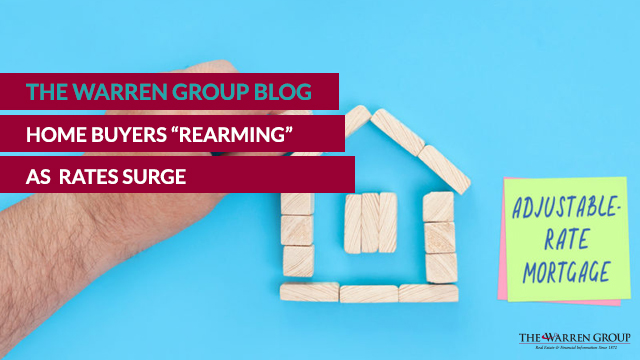Adjustable-rate mortgages are having a moment.
The percentage of home buyers choosing an ARM over a conventional, 30-year fixed-rate mortgage has jumped to 12 percent, according to CNBC.
That is four times what it was earlier this year when adjustable-rate mortgages made up just 3 percent of the market.
And ARMs are gaining market share even as the volume of mortgage applications has fallen dramatically, down nearly 40 percent from a year ago, mortgage data shows.
At first blush, the idea of taking out an ARM would appear counterintuitive amid surging interest rates.
After all, mortgage rates are now higher than they have been for years, hitting 6.81 percent after a rapid run-up over the last few months.
But as brokers and others who track mortgage data know, many popular ARM products lock in a below-market rate for the first five years.
For example, the average rate on 5/1 ARMs – which have a fixed rate for the first five years – is a relatively attractive 5.56 percent, the CNBC piece notes.
What does the future have in store for mortgage rates?
Home buyers are making a bet that rates will be lower – or at least not dramatically higher – five years from now.
Given the growing possibility of a recession, and the likelihood that a downturn could eventually lead to a decline in interest rates, it’s not a crazy argument by any means.
That said, predicting the future is always risky.
The comeback of adjustable-rate mortgages, in turn, is striking given the reputational hit ARMs took in the mid-2000s leading up to the Great Recession.
As the Fed hiked interest rates, home buyers who had taken out subprime, adjustable-rate mortgages, often on homes they could barely afford, began to default in record numbers.
However, a lot has changed since then. Federal reforms to the banking system have eliminated so-called ‘liar loans,’ which did not require proof of employment or income and which contributed to the big wave of defaults and foreclosures that wreaked havoc in the housing market and the economy from 2006 to 2010.
Moreover, a series of federal regulations over the years have put limits on how fast, how much, and how often rates can be adjusted on ARMs.
Is the revival of interest in ARMs just a flash in the pan?
Only time will tell, but given current market conditions, the growing interest in adjustable-rate mortgages appears here to stay for at least the next few months, if not longer.
With inflation still high, the Federal Reserve shows no signs of easing on its rate-hike campaign, which will keep the upward pressure on mortgage rates.
(Helpful hint: Brokers and mortgage lenders can analyze mortgage activity from A to Z through the various data sets offered by The Warren Group.)
But here’s a safe bet: As rates keep moving higher, the number of home buyers willing to take a chance on adjustable-rate mortgages will likely only continue to grow.


Recent Comments